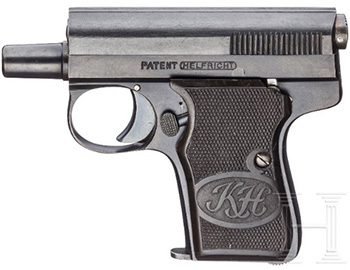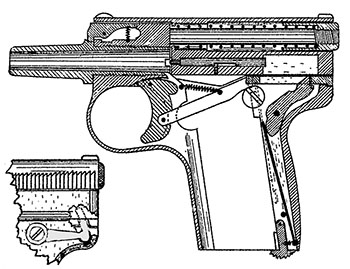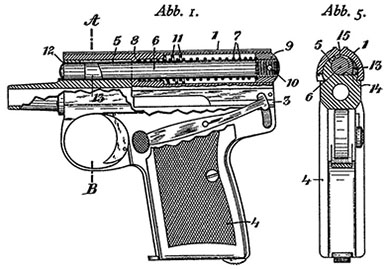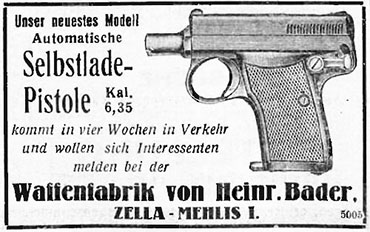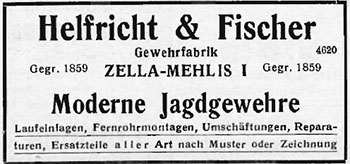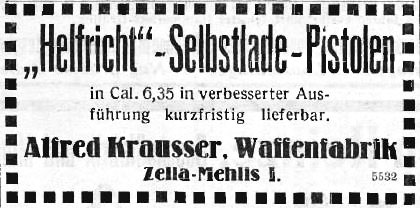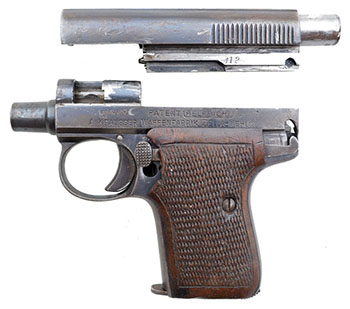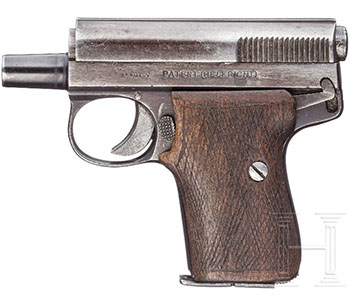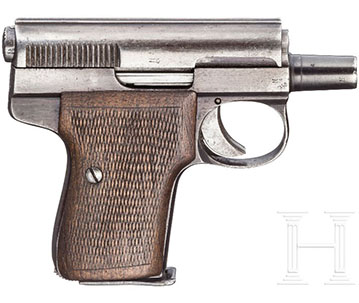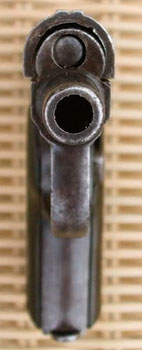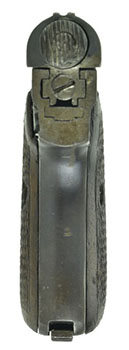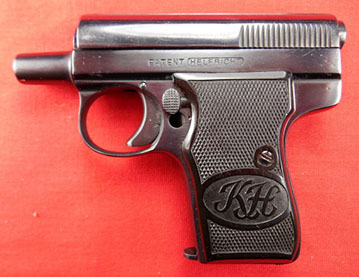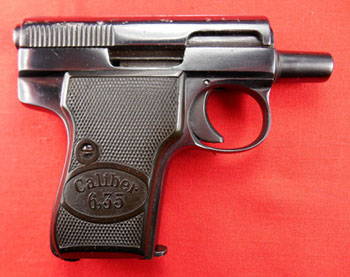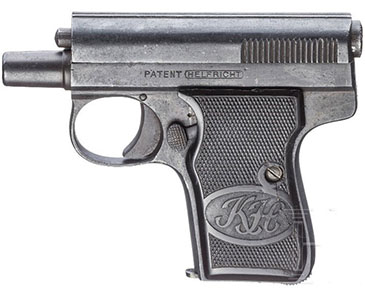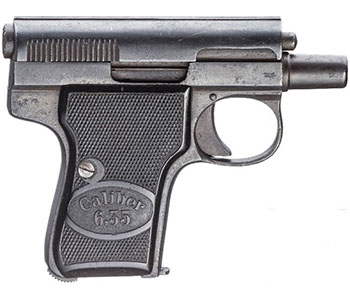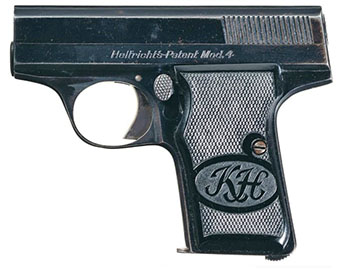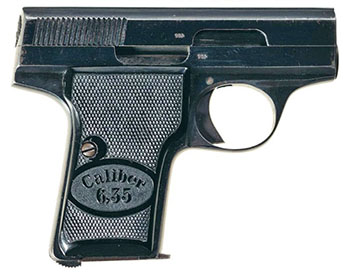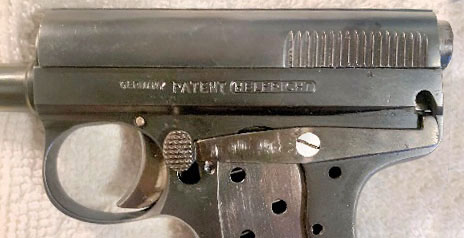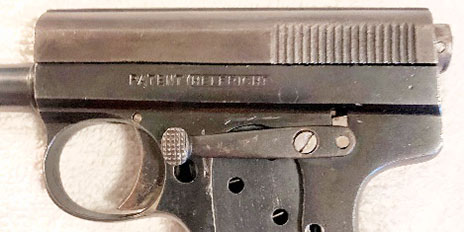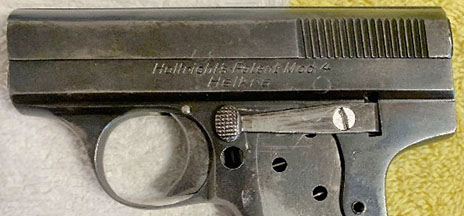 |
||||||||||||||||||||||||||||||||||||||||||||||||||||||||||||||||||||||||||||||||||||||||||||||||||||||||||||||||||||||||||||||||||||||||||||||||||||||||||||||||||||||||||||||||||||||||||||||||||||||||||||||||||||||||||||||||||||||||||||||||||||||||||||||||||||||||||||||||||||||||||||||||||||||||||||||||||||||||||||||||||||||||||||||||||||||||||||||||||||||||||||||||||||||||||||||||||||||||||||||||||||||||||||||||||||||||||||||||
 |
||||||||||||||||||||||||||||||||||||||||||||||||||||||||||||||||||||||||||||||||||||||||||||||||||||||||||||||||||||||||||||||||||||||||||||||||||||||||||||||||||||||||||||||||||||||||||||||||||||||||||||||||||||||||||||||||||||||||||||||||||||||||||||||||||||||||||||||||||||||||||||||||||||||||||||||||||||||||||||||||||||||||||||||||||||||||||||||||||||||||||||||||||||||||||||||||||||||||||||||||||||||||||||||||||||||||||||||||
|
Helfricht Pistols by Bob Adair
The Helfricht pistol design was patented by Hugo Helfricht of Zella-Mehlis in 1920 but the pistols were manufactured and sold by Alfred Krausser (A. Krausser Waffenfabrik,) also of Zella-Mehis, under the name “Helkra.” That name was derived by combining the first three letters of both parties. They are often called Helfricht pistols because “PATENT HELFRICHT” is stamped on the left side of the frame and the name “Helkra” appears nowhere on most pistols, only a later Model 4 has the name on the frame legend. Regardless, I believe these pistols were probably marketed under the “Helkra” name at least during the late production period. To maintain consistency with the universally used name, they will be referred to as Helfricht pistols. The left grip has the letters “K” and “H” which probably represent “Krausser” and “Helfricht.” Heinrich Helfricht was involved in the Zella-Mehis firearms industry. Post WWI advertisements for Helfricht & Fischer, firearms maker, founded in 1859, show that he was involved in hunting rifles and associated services, including the manufacture of spare parts according to specification. Around 1919 Helfricht must have designed what would become his namesake pistol and began to advertise for it. One ad from August 1921 through early 1922 is for pre-orders on his original design, stating that production will begin in four weeks. The manufacturer is listed as “Waffenfabrik von Heinr. Bader”.
Helfricht submitted and was awarded a design patent for his original design on 14 July 1920. The patent drawings clearly show the original design that appears in the Bader advertisements. The patent itself is focused on the safety lever which was designed to ensure that the safety worked throughout the life of the pistol, regardless of wear on the mechanism. The design and/or the manufacturer apparently did not work out because in the July 2, 1922 issue of Waffenschmied a new advertisement appears. The ad announces Alfred Krausser as the new manufacturer of an improved version of the Helfricht pistol in Cal. 6,35. This improved version has the long safety lever of the first variation pistols.
Based on the wording of the ad announcing Krausser’s involvement, one must wonder if some Bader-made pistols were indeed produced and sold. If so, they are certainly scarce and would precede what we have called the first variation.* Mathews states that four variations are known. Although he refers to them as “models”, only the last one is marked as such. The pistols are all chambered for 6.35 mm and are of the same basic design. Small changes appear incrementally, and the four variations probably represent improvements to the design made during the course of production. Mathews mentions reports of a 7.65 mm version having been made but neither he nor any later source confirm any caliber other than 6.35 mm. The pistol is of a blowback design with some unusual characteristics. The slide and the breech block are formed from one piece of steel. The breechblock has grooves on both sides that fit into rails cut into the frame (like on most pistols). At the bottom of the breechblock is a small channel for the striker, and its guide pin, and spring. A larger bore above holds the recoil assembly. This is made up of a large button in the rear, fixed to a smaller guide pin that protrudes from the front with a locking lug, or key. The recoil spring is internal and not visible. A small screw at the rear of the slide allows removal of both the recoil and striker assemblies.
There is a slip off trigger bar on the right side of the frame, under the grip panel. The pull of the trigger does two things. A sear bar that is fit into grooves in the back of the frame moves to the rear and extends a few millimeters outside of the frame. As the bar moves to the rear, the sear, which is a small lug protruding at a vertical 90 degrees at rest, engages the striker. The sear is pushed back and down by the sear bar to a point which releases the striker to fire forward into the cartridge. All variations of the Helfricht have a safety on the left side of the pistol near the trigger. On the first variation the safety lever itself extends under the grip and beyond it, over the left tang, and ends with a hook that literally locks into the frame and blocks the sear bar. In the later models the safety lever was shortened and still acts in a similar manner to block the breech block, but now it is hidden under the left grip. The unusual hole underneath the safety was intended as a visual reminder that the safety was off. With the safety engaged the entire hole is covered. The most unusual feature of the design is the split ejection port. This port is milled from a section of both the slide and the frame, and only when the slide fully cycles to the rear are the two sections aligned for the casing to be ejected. The barrel is 51 mm (2 inches long,) and is mounted low in the frame with a rail system similar to the P08. All barrels have six grooves with a right-hand twist. In three of the four variations, this barrel extends beyond the slide by ¾ of an inch, giving the gun a unique and peculiar appearance. The pistol is 105 mm in length, and Zhuk reports it weighs 323 grams. Early grips are made of checkered walnut, through at least Serial Number 112. Most grips are made of hard black rubber held by a single grip screw; the left grip is marked as previously mentioned, with the “KH” monogram, and the right grip is marked “Caliber 6,35.” Grips on first variation pistols have a cutout on the left grip to allow the safety lever to extend to the tang. Pistols are proofed with the German Crown N on the right side: near the muzzle on the frame, slide, and barrel. Sights are a simple groove along the top of the slide. Later pistols have a deeper groove. To disassemble the first variation, and this probably applies to all variations, place the safety to fire. The button in the back of the slide needs to be pushed in completely and turned 90 degrees to the right and released. This will free the guide rod near the muzzle. The slide can be pulled off of the frame to the rear when the trigger is depressed (which lowers the sear for clearance.) To reassemble, place the slide back on the frame while depressing both the trigger and the button. Once the slide is fully forward, rotate it 90 degrees counter-clockwise. (The slide will disassemble with the safety on but will not reassemble unless it is off.) While it is always good practice to remove the magazine during disassembly, this pistol can be taken apart with an empty magazine inserted. As previously mentioned, there are four variations, sometimes called models since the final version is actually marked “Mod. 4.” Hogg and Mathews differ on their descriptions of the four variations and many pistols have been misidentified over the years. Making things more difficult, serial numbers are stamped on the breech block, so one must disassemble the pistol to find them. A serial number survey and census was taken using all known print and web resources and was used to reconcile the many conflicting errors in print regarding the pistol. As best I can tell, the four variations are most accurately described as follows: First Variation: Early ones have wood grips, later pistols have hard rubber grips with a cutout for the safety lever. The safety lever has a visible hook on the left tang. The recoil rod mounted over the barrel is made in such a way that the side of the slide does not sit flush with the front of the frame, but rather sits back about 5 mm. At the back end, the rod is retained by a button that can be pushed and turned to release it. A slotted screw is under that button and holds the firing pin assembly. Serials extend to at least 339. Second Variation: Hard rubber grips, safety lever has been shortened and the rear end is hidden under the left grip, which no longer has the cutout. 4 pistols were observed, but the only serial number recorded was 587. Based on the highest 1st variation and lowest 3rd variation, 2nd variation serial numbers fall between 339 and 766 and number less than 427. There is an outlier: one example has Serial Number 2102. Third Variation: Hard rubber grips, safety lever remains the same as the 2nd variation. The recoil rod front has changed so now the slide sits completely flush with the frame. The firing pin assembly is now pinned so the slotted screw at the rear is gone. Serials range from 766 to 1418. This range contains 652 pistols at most. Fourth Model: Hard rubber grips, slide covers entire barrel, the grip is straighter than on previous pistols, requiring a slight change in the grip panels. The safety, while remaining outwardly similar to the 2nd and 3rd variations, has been modified slightly. All Fourth Model serials fall in the 3xxx range. There is a large gap between the highest Third Variation, Serial Number 1418, and these 4th variations in the 3xxx range. Only one oddball 2nd variation, Serial Number 2102, is noted in this gap. Based on the serial numbers observed, total production numbered less than 4,000 and the first three variations progressed rather quickly. The Max Leppner Catalog of Zella-Mehlis was published circa 1921-1922 and pictures a third variation pistol. Mathews mentions this catalog, but I have not observed the Helfricht for sale in any other publication after 1922. Many pistols are marked “GERMANY” on the frame, and these are scattered throughout production with no apparent pattern, so it seems that much of the production was exported. Two more observations based on the serial numbers recorded: although the serial numbers show changes were made quickly, 20 total pistols were observed, and the four variations were distributed rather equally. For Variations 1-4, the numbers observed were 5,4,6, and 5 respectively. The second observation is that a large gap in the serial range was observed between the last 3rd variation at 1318 and the first Model 4 at 3080. While the pistol is scarce, examples surface occasionally and a focused collector will probably find one with a determined search.*
Summary of known markings: Pistols are numbered internally on the left side of the breech block . All pistols are proofed with German Crown N proofs on the right side in three places: the barrel, the frame, and the slide. Many pistols are stamped “GERMANY” on the left side of the frame near the frame legend. Pistols through the first three variations are stamped “PATENT HELFRICHT” with HELFRICHT circled. The last variation has a different legend: “Helfricht’s-Patent Mod. 4” with an italicized and lower-case font. One observed Model 4 has “Helkra” under this legend. First Variation/Model 1
Second Variation/Model 2
Third Variation/Model 3
Model 4
Differences In Safety Lever
* The author would be interested in information on any other examples and/or advertisements for the Helfricht. Write to adairs4@hotmail.com. Thanks to Ed Buffaloe, Dr. Stefan Klein, and Greg Graham for their help with this article. |
||||||||||||||||||||||||||||||||||||||||||||||||||||||||||||||||||||||||||||||||||||||||||||||||||||||||||||||||||||||||||||||||||||||||||||||||||||||||||||||||||||||||||||||||||||||||||||||||||||||||||||||||||||||||||||||||||||||||||||||||||||||||||||||||||||||||||||||||||||||||||||||||||||||||||||||||||||||||||||||||||||||||||||||||||||||||||||||||||||||||||||||||||||||||||||||||||||||||||||||||||||||||||||||||||||||||||||||||
|
Copyright 2020 by Robert Adair All rights reserved. |
||||||||||||||||||||||||||||||||||||||||||||||||||||||||||||||||||||||||||||||||||||||||||||||||||||||||||||||||||||||||||||||||||||||||||||||||||||||||||||||||||||||||||||||||||||||||||||||||||||||||||||||||||||||||||||||||||||||||||||||||||||||||||||||||||||||||||||||||||||||||||||||||||||||||||||||||||||||||||||||||||||||||||||||||||||||||||||||||||||||||||||||||||||||||||||||||||||||||||||||||||||||||||||||||||||||||||||||||
|
|
||||||||||||||||||||||||||||||||||||||||||||||||||||||||||||||||||||||||||||||||||||||||||||||||||||||||||||||||||||||||||||||||||||||||||||||||||||||||||||||||||||||||||||||||||||||||||||||||||||||||||||||||||||||||||||||||||||||||||||||||||||||||||||||||||||||||||||||||||||||||||||||||||||||||||||||||||||||||||||||||||||||||||||||||||||||||||||||||||||||||||||||||||||||||||||||||||||||||||||||||||||||||||||||||||||||||||||||||
